
Since the birth of electronic music, electronic instruments have became gradually more powerful, providing musicians with ever newer ways of making sound effects and audio manipulation. Unfortunately music companies seemingly prefer to put their efforts on the software side, or at least on useless lighting effects, rather than developing new forms of interaction for the hardware side.
This lack of new ways of interaction is strongly felt by musicians and artists who play electronic instruments. The need for greater tangibility in sound manipulation is evident in the alternative music instruments shown on YouTube or Vimeo: many are attempts to give more physicality to the sound and to make it tangible. But this need is hardly new. Conventional music instruments have always been more physical that electronic ones, and their sound more ‘tangible’ in the sense that musicians can feel the music’s vibration and consistency, an important characteristic of playing music.
Interaction
This project aims to learn from conventional instruments the most important aspects of their interactions and to translate them for an electronic device.
This has been done without forcing interactions with electronic instruments to emulate those with conventional instruments, but instead to respect the nature of each. This approach highlights important aspects of conventional instruments, notably that a few controls can be used in many ways to obtain different effects. Electronic instruments, by contrast, usually have only one action per control, which restricts the musician’s freedom to jam on the instrument.
Hardware
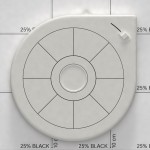
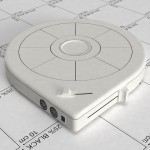
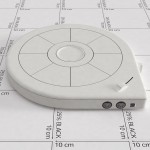
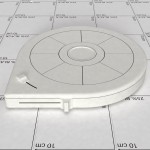
The development of the hardware side was strongly influenced by user tests made with a rough software and hardware mock-up, and all the effects and the controls chosen to manipulate the audio sample.
The combination of this point and the study of interactions led to a clear and minimal shape with few visible controls each of the can be used in multiple ways to get different effects.
The four renders above represent the final hardware design regarding just the shape and size. Colors and materials were not defined at this point.
Software
The software side of OTTO is the instrument’s brain.
Beside applying effects and controls on the audio sample the software keeps the rhythmic section synced, not just with the audio sample’s tempo but also with an external software for music creation. The image above shows the basic use of the software. Once it has been installed, the user needs, in order to play, only to launch the application and drag an audio sample into the dropbox to load it for the hardware. OTTO is then ready to go!
Prototype
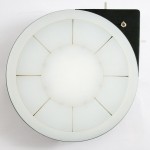
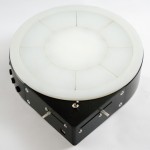
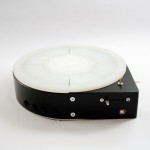
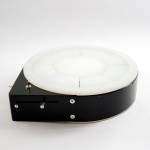
The images above represent the final working prototype. Obviously there has been some change in order to build something working but the final result in term of interaction and especially in terms of experience was anyway succesfull.
See the DEMOS on my site